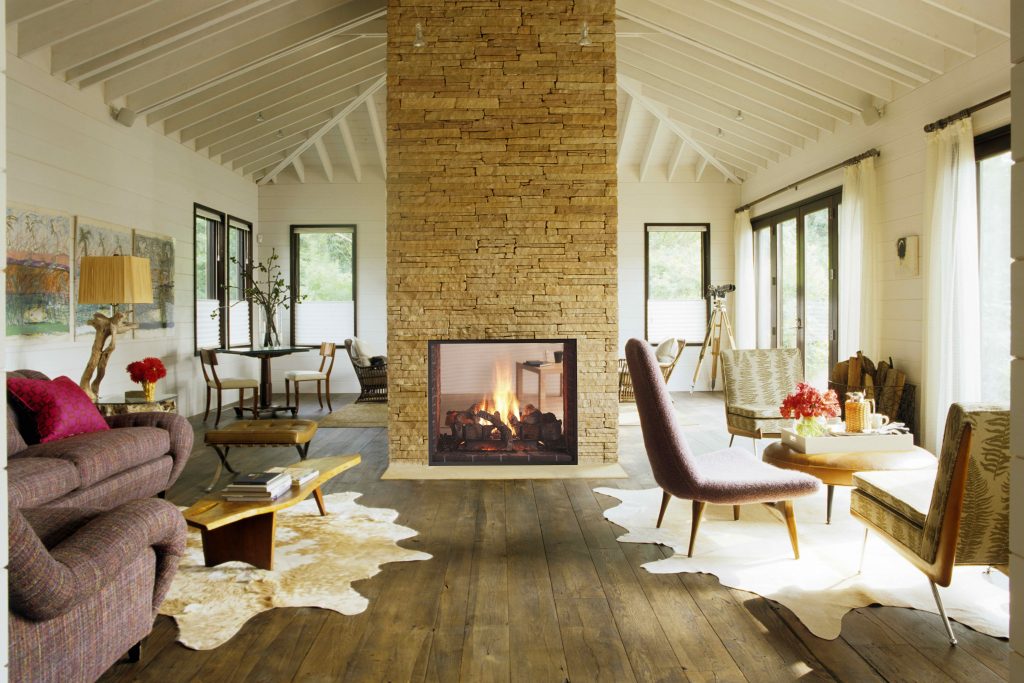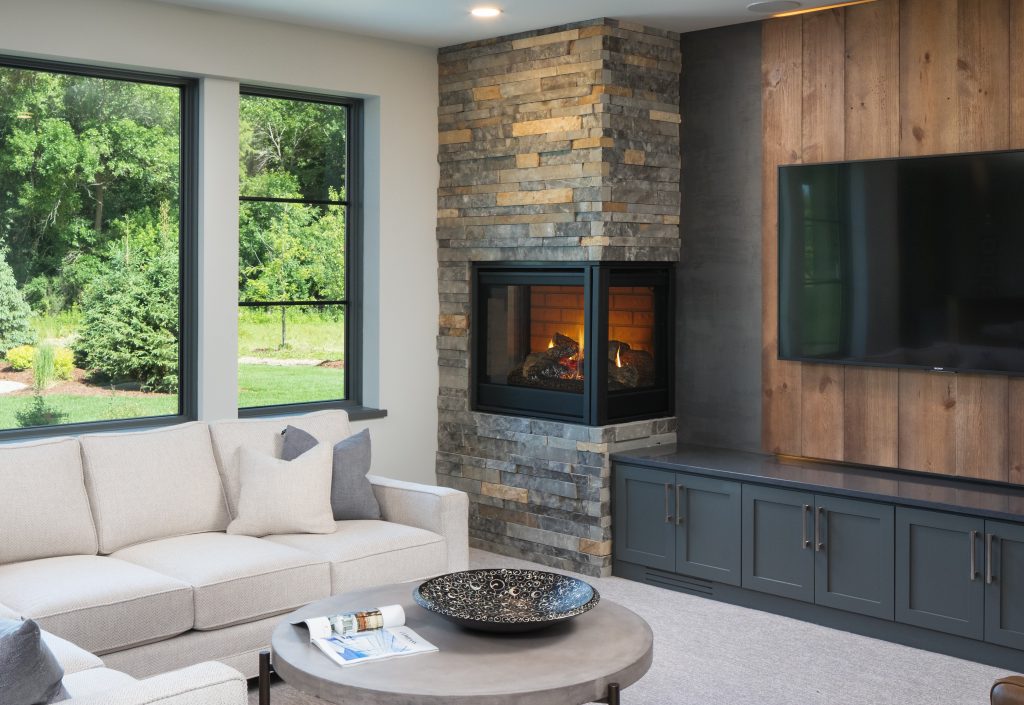
7 Trends Heating Up the Fireplace Industry
From outdoor living rooms to glassless designs, contemporary fireplaces combine function with luxury amenities.
Most would agree that there are few activities as relaxing (or romantic) as curling up in front of a fireplace with a good book or a glass of wine. In fact, 97% of people say they are interested in having a fireplace, with 79% of luxury homebuyers calling them a “must-have,” according to research done by Hearth and Home Technologies and Fireside Hearth & Home, the world’s largest fireplace installing distributor and dealer.
But it’s not about seeking a heat source. “The research was clear—homebuyers are looking at fireplaces because they add coziness to their homes, and create a relaxing and inviting environment. What’s more, they see the fireplace as a focal point of design that adds to the home’s overall décor and value,” says Peter Dircks, vice president and general manager for Fireside. “Further, it’s not just the fireplace. It’s the overall package of the fireplace design, the decorative front, the mantle choice, and the decorative stone or other unique wall treatments. The whole interior design of it is really important and what we bring to our customers.”
Here, Fireside shares seven trends that are heating up the fireplace industry.
1. Modern touches.
Today’s fireplaces go beyond the traditional brick-and-wooden-mantel design most homeowners are accustomed to. Think rectangular shapes and landscape views, as well as see-through and three-sided peninsula styles. Even fireplace interiors are getting an overhaul, with customizable options including reflective surfaces and stainless-steel backgrounds, interior details like glass media and log choices, and front finishes in brass, brushed nickel, and oil-rubbed bronze. “A lot of homebuyers aren’t aware of the breadth and depth of designs that exist in the marketplace,” says Dircks. “There’s such an abundance of beautiful styles.”
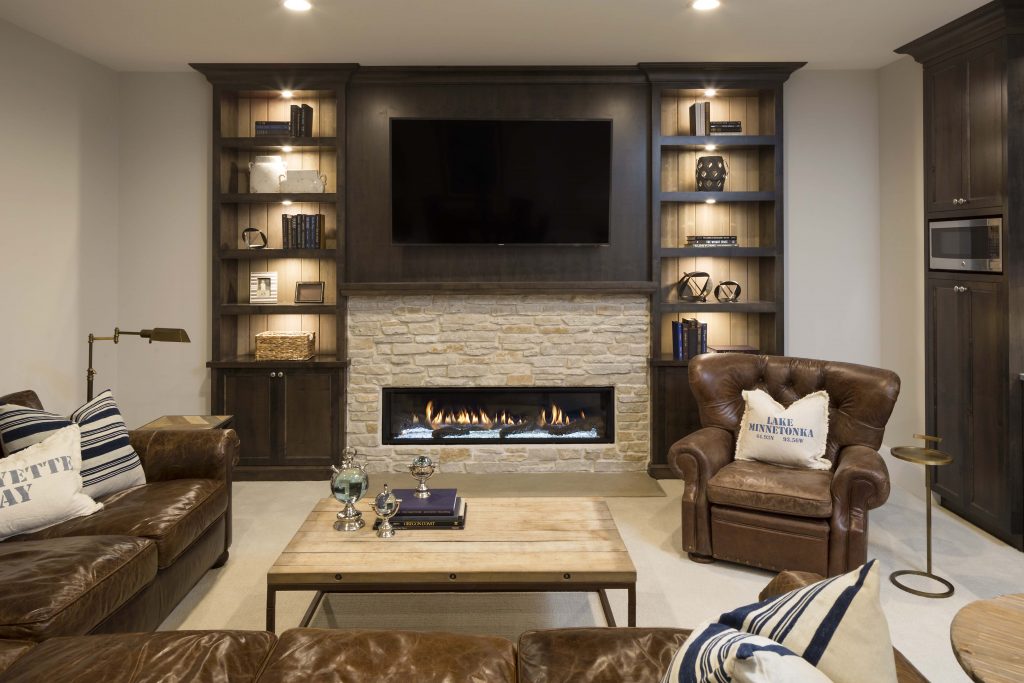
2. Traditional realism.
Of course, these modern designs don’t fit the aesthetic of every home and homeowner, and there’s still a place in the market for those who lean toward classic styles. That’s where the “traditional realism” trend comes in—translation: units that have the look and feel of traditional wood-burning fireplaces, but with all the luxuries, amenities, and ease of gas-burning fireplaces and their contemporary counterparts, like realistic-looking split wood logs and LED-lit ember beds.
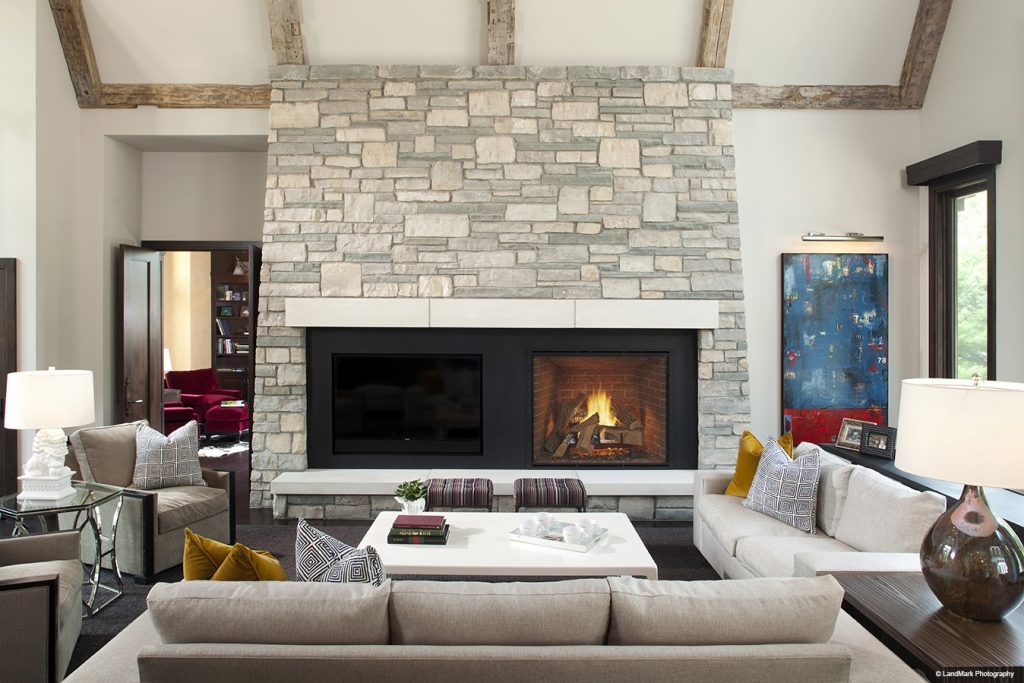
3. Glassless design.
Taking the traditional realism trend one step further is Heat & Glo’s Phoenix TrueView Gas Fireplace. Featuring an open-concept design, the glassless front means you get the clearest view possible of the logs, embers, and flames, fully customized with a traditional brick or modern reflective black glass interior. If you close your eyes, we bet you’ll be transported to a campfire in the woods, crackling flames and all.
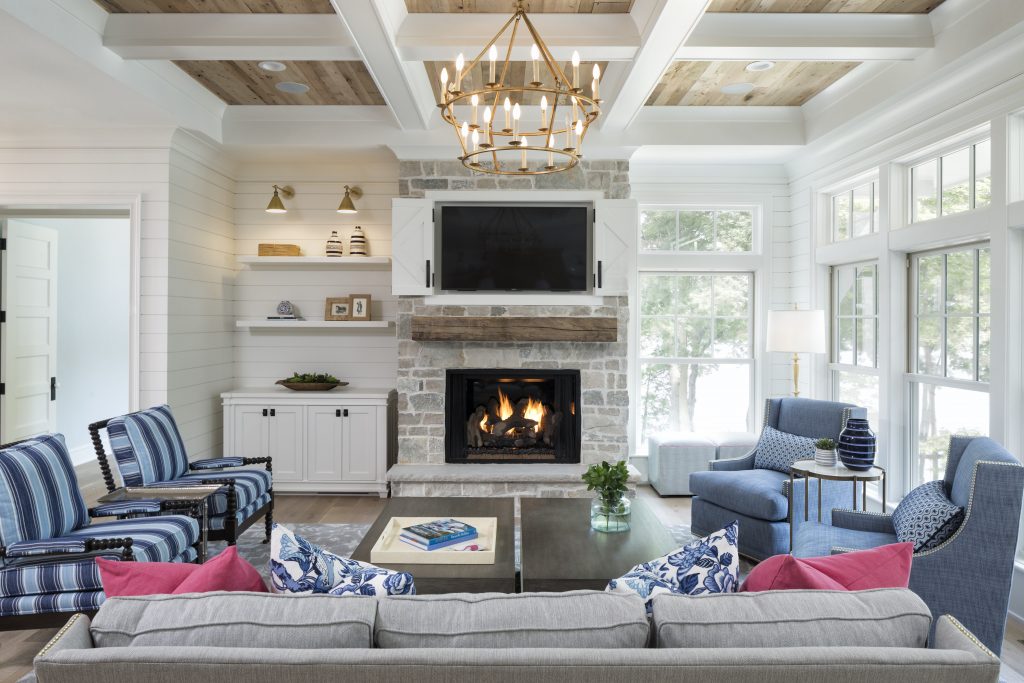
4. Cool to the touch.
Safety should always be a top priority when it comes to fireplaces, especially if there are young children in the house. “All gas-burning fireplaces come standard with safety screens, and now there are some new technologies that offer cool-to-the-touch glass for safety,” Dircks says. “For example, the Heat & Glo Primo features SafeSurface glass with no exposed seams, mesh, or metal trim, combining both safety and modern design.”
5. Outdoor living rooms.
With Minnesota’s short summers and long winters, it makes sense that homeowners want to soak up as much time outside as possible. Enter: outdoor living rooms, complete with wood-burning or gas fireplaces that invite you and your guests to linger a little longer around the seating area. “People are enjoying staying at their homes more, and an outdoor fireplace adds some nice visual flair and ambiance to their outdoor living room,” says Dircks.
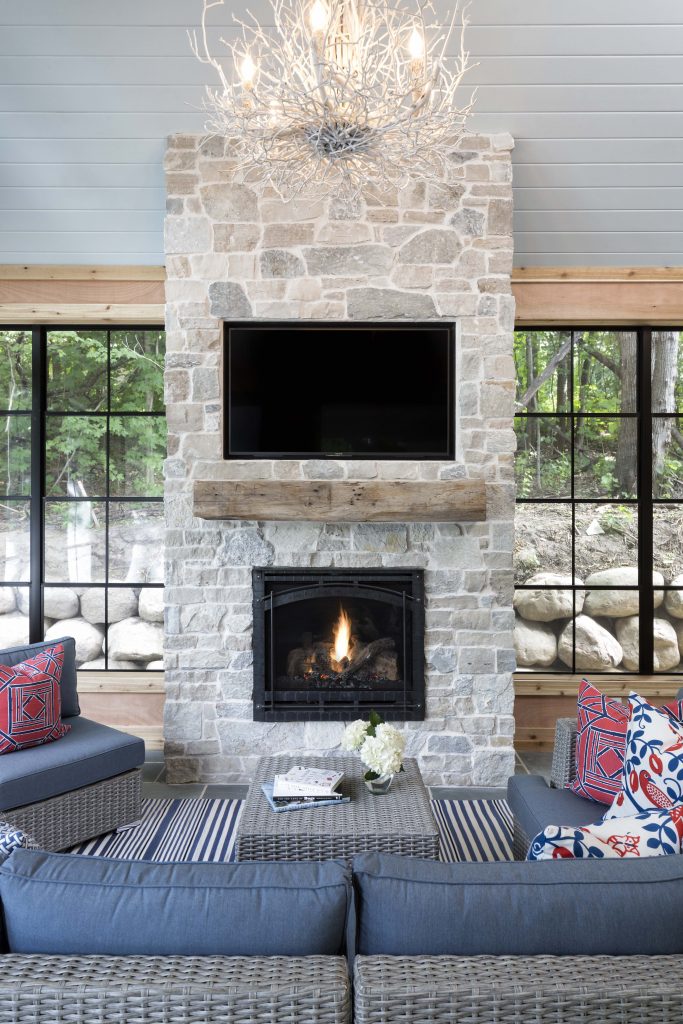
6. Heat management.
The warmth of a fireplace is hard to beat on a cold winter night, but sometimes you just want the cozy atmosphere—sans the sweat. Heat management gives you the best of both worlds. “When you want the look of a flame but don’t want all the heat, you actually move the heat somewhere else in the home or outside the home,” explains Dircks. “Maybe you’re having a dinner party and it’s summertime, or you have a family room with a fireplace, but you want some heat in your office in the next room over. Heat management allows you to move the heat outside of your house or divert it to another room.”
7. Smart capabilities.
With today’s technology, nearly every home feature has the option to be connected to and controlled by a phone or your voice. Fireplaces are no exception. “It reduces the need for having an extra remote,” says Dircks, calling out the benefits of smartphone connectivity, like the ability to turn a fireplace on or off even when you’re outside of the home. Flame height, interior lighting effects, and fan speed can also be controlled via app. Traditional or modern, indoor or outdoor, the best fireplaces are the ones that match the design of their surroundings and needs of the homeowners. “We help builders, architects, and designers really think about how their clients want to use the space—that family room, that recreation room, the bathroom, wherever the fireplace is going,” says Dircks. “We love to help builders and architects with their design vision—combined with the wants and needs of their homebuyer—to achieve the outcome that everyone really, really wants.”
